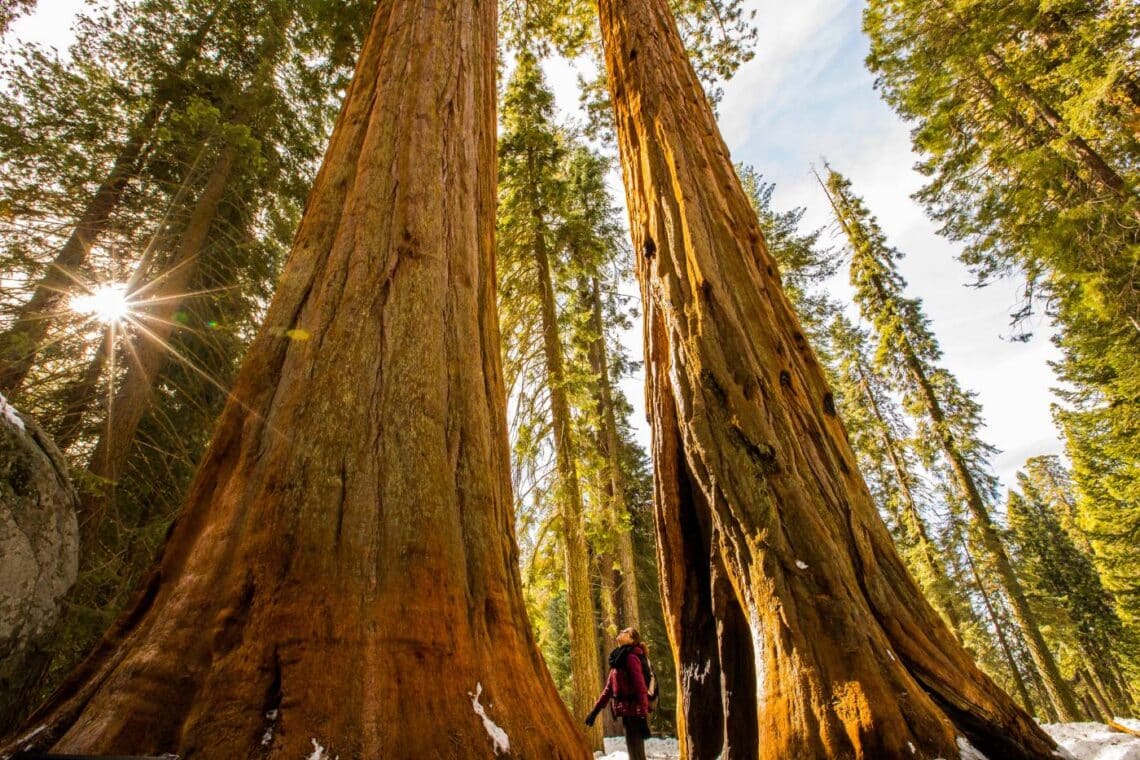Sequoia National Park Weather-- Be Planned For Your Outdoor Experience
Sequoia National Park Weather-- Be Planned For Your Outdoor Experience
Blog Article
Explore the Diverse Wild Animals Habitats Within Sequoia National Park
Sequoia National Park is an environmental treasure, showcasing an excellent variety of wildlife environments that contribute to its abundant biodiversity. From the marvelous huge sequoia forests to the varied towering meadows, each setting plays an essential role in sustaining different species, consisting of both common and unusual fauna.
Introduction of Sequoia National Park
Sequoia National forest, nestled in the southern Sierra Nevada range of mountains of The golden state, is renowned for its breathtaking landscapes and looming huge sequoias. Developed in 1890, it is one of the oldest national forests in the USA, dedicated to maintaining the natural elegance and eco-friendly stability of this one-of-a-kind region. The park includes over 404,000 acres of diverse surface, featuring stunning hills, deep canyons, and lavish meadows.

Site visitors can explore countless hiking tracks, ranging from leisurely strolls to tough backcountry courses, each supplying an one-of-a-kind point of view of the park's grandeur. With its combination of natural wonders and entertainment chances, Sequoia National Park functions as an important refuge for both wildlife and those looking for to connect with nature.

Significant Wild Animals Habitats
The diverse landscapes of Sequoia National forest produce a mosaic of wild animals environments that sustain a rich variety of types. These habitats range from lavish meadows and dense forests to rough towering areas and expansive river valleys, each supplying special environmental niches.
One famous habitat is the giant sequoia woodland, identified by looming trees and a rich understory, which supports numerous mammals, birds, and insects. The mixed conifer woodlands, composed of varieties such as sugar pine and white fir, deal added shelter and food sources for wild animals.
Meadows and meadows play a critical duty in the park's communities, working as crucial foraging grounds for herbivores like deer and small creatures. These open locations likewise attract varied bird species, especially during movement periods.
The park's greater altitudes feature towering habitats, where problems are severe and types are adjusted to endure in such extremes (Sequoia National Park hour). Below, one can discover unique plants and animals that prosper in rough, cold environments
Flora and Fauna Variety
Within the varied environments of Sequoia National forest, an amazing range of vegetation and fauna coexists, showcasing the complex connections that sustain the park's biodiversity. The park is home to over 1,300 plant species, consisting of the famous gigantic sequoias, which are among the largest and oldest trees on Earth. These stunning trees provide important habitat and food resources for different wild animals, promoting a complicated web of ecological communications.
Pet varieties in Sequoia National forest are similarly diverse, with habitats ranging from lowland foothills to high alpine settings. Animals such as black bears, mule deer, and bobcats grow in this rich community, while bird varieties, consisting of the impressive gold eagle and the elusive discovered owl, elegance the skies. Amphibians and reptiles, like the Sierra amphibian and the western rattlesnake, likewise play important roles in keeping environmental balance.
The park's unique combination of altitude slopes and microclimates sustains these different varieties, highlighting the relevance of protecting the natural environments that allow such a rich tapestry of life to prosper. Understanding this variety is important for valuing the environmental importance of Sequoia National Park.
Conservation Initiatives in the Park
Conservation initiatives in Sequoia National Park play a critical function in safeguarding its special environments and the diverse varieties that populate them. The park utilizes a multifaceted technique, consisting of habitat remediation, varieties keeping an eye on, and invasive varieties monitoring. These campaigns are essential for keeping the delicate equilibrium of the park's ecosystems, which consist of gigantic sequoias, meadows, and alpine settings.
Energetic repair projects concentrate on reestablishing native plant communities and restoring abject environments. Sequoia National Park hour. This is specifically important in areas affected by human activity or all-natural disturbances such as wildfires. The park's biologists description perform regular surveillance of crucial types, including the jeopardized Sierra Nevada bighorn sheep, to assess populace health and wellness and notify administration techniques
Intrusive varieties posture a considerable danger to the park's biodiversity. Through these detailed efforts, Sequoia National Park makes every effort to shield its rich all-natural heritage for future generations while making certain the resilience of its varied wildlife environments.
Tips for Wild Animals Observation
Observing wild animals in Sequoia National forest provides an one-of-a-kind opportunity to get in touch with nature and appreciate the diverse species that prosper in this impressive environment. To optimize your wildlife monitoring experience, consider several important tips.
First of all, plan your go to during morning or late mid-day, as these times are most active for numerous pets. Bring binoculars to observe wild animals from a secure distance without interrupting their all-natural actions. Furthermore, familiarize on your own with the varieties you want to see; understanding their habits and habitats can improve your opportunities of detecting them.
Perseverance is important; wildlife monitoring usually needs waiting silently and knowing your surroundings. Remain on marked tracks to lessen your effect on the environment and guarantee your security. It is likewise advisable to maintain a respectful distance from animals, staying clear of any kind of activities that could stress them or interrupt their atmosphere.
Last but not least, think about signing up with guided tours led by well-informed park rangers. These professionals can give important understandings and increase your possibilities of experiencing wildlife in their all-natural settings. By adhering to these tips, you can enhance your experience and add to the conservation of Sequoia's wild animals.

Verdict
Sequoia National Park serves as an important refuge for varied wildlife, showcasing a remarkable array of environments that support numerous species. Inevitably, the park's biodiversity underscores the importance of maintaining such all-natural landscapes for future generations.
Please visit one of our local supporters - Wholesale Liquidation Pallet Playstation 5 For Sale
Report this page